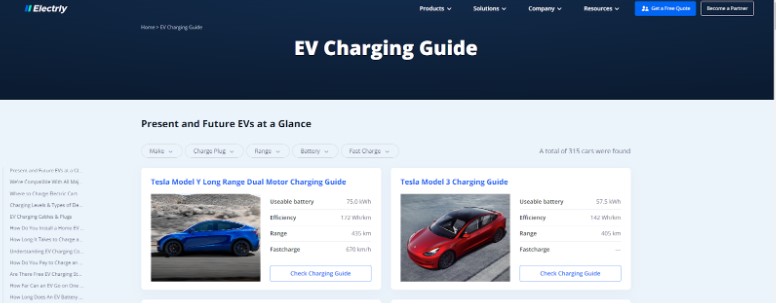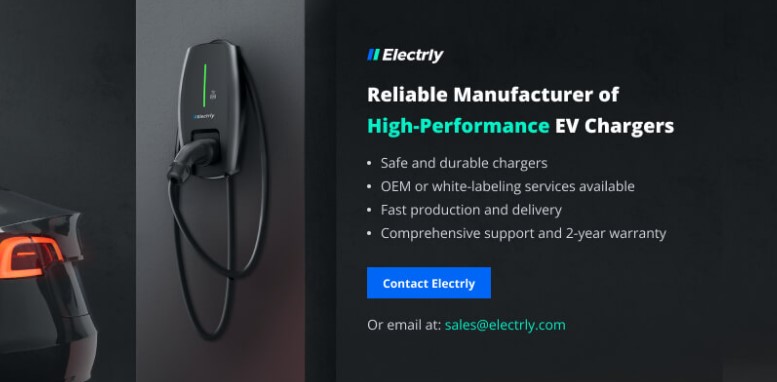Stranded with a dwindling battery on a deserted road? The conundrum of Electric Vehicle (EV) owners is real. In an era embracing sustainability, the lack of accessible and efficient EV charging infrastructures leaves many frustrated. But fear not. A solution is at hand.
Delve into ‘EV Charging: The Comprehensive Guide’, where every charging woe is tackled. Navigate through charging options, from home setups to public networks. Discover tips for optimizing charging times and extending battery lifespan. Embrace a future of hassle-free EV journeys with this ultimate compendium of charging insights.
What is EV Charging?
EV Charging refers to replenishing an Electric Vehicle (EV) battery with electrical energy to enable continued driving. It involves connecting the EV to a power source, typically through a charging cable, and transferring electricity to the vehicle’s battery pack.
EV charging can occur at various locations, including private residences, workplaces, public charging stations, and even fast-charging stations along highways. The goal is to recharge the EV’s battery to a level that provides sufficient range for the desired travel distance. Different charging levels and connectors offer varying charging speeds and compatibility with different EV models.
The Ultimate Resource Guide of EV Charging
Electric vehicles (EVs) have rapidly gained popularity in recent years as a cleaner and more sustainable mode of transportation. One of the critical aspects of EV ownership is the charging infrastructure. Understanding EV charging is essential for maximizing the convenience and efficiency of your electric vehicle. Delve into The Ultimate Resource Guide of ev charging, from the types of chargers available to charging etiquette and future developments.

Types of EV Chargers
There are several types of EV chargers, each offering different charging speeds and capabilities. Understanding the various charger types is crucial for optimizing your EV charging experience.
Level 1 Chargers: These chargers use a standard household outlet (120 volts) and are the slowest charging option. They’re most suitable for overnight charging and are typically included with your EV purchase.
Level 2 Chargers: These charge 240 volts, providing faster charging than Level 1. They are commonly installed at homes, workplaces, and public charging stations. Level 2 chargers are essential for daily charging needs.
DC Fast Chargers: Level 3 chargers are high-power chargers capable of delivering a significant charge in a short time. They are typically found at public charging stations along highways and are ideal for long-distance travel.
What is Electrly?
Electrly is a prominent player in the realm of EV charging solutions, hailing from China. Renowned for its prowess as a premier manufacturer, Electrly stands tall among the best in the industry. Distinguished by a diverse array of intelligent and rapid charging solutions, the brand seamlessly caters to an array of environments – be it residential, commercial, or industrial. With a commitment to cutting-edge technology, Electrly emerges as a steadfast choice for those seeking efficient and effective charging solutions for electric vehicles.
Why Choose Electrly?
Unbiased Insights: Get impartial information about EV charging, from charger types to maintenance, aiding informed decisions.
Inclusive Knowledge: Tailored for novices and experts, covering basics and advanced topics, ensuring relevance for all.
Diverse Solutions: Explore home, workplace, and public charging options, finding what suits you best.
Actionable Tips: Practical advice to optimize charging efficiency and schedules, enhancing your EV experience.
Eco-Conscious: Electrly supports greener choices, contributing to a sustainable, low-emission future.

User-Friendly: Designed with you in mind, offering organized, accessible, and simplified information.
Current Updates: Stay informed about evolving EV trends and technologies, guiding you with the latest insights.
Charging at Home
Charging at home is the most convenient way for many EV owners. It ensures you start with a fully charged vehicle each day, eliminating the need to visit public charging stations frequently. Here’s what you need to know about home charging:
Installing a Level 2 Charger: If you plan to charge your EV home, consider installing a Level 2 charger. It requires a dedicated circuit and a higher-voltage outlet, providing faster charging times.
Time-of-Use (TOU) Rates: Many utility companies offer TOU rates, which lower electricity costs during off-peak hours. Utilizing these rates can significantly reduce your charging expenses.
Smart Charging: Some EVs and chargers offer smart charging features, allowing you to schedule charging during low-demand periods or control charging remotely through a smartphone app.
Charging Infrastructure
While home charging is convenient, access to public charging stations is essential, especially for longer trips. Understanding the charging infrastructure is crucial:
Public Charging Stations: These stations are located in various places, such as shopping centers, parking garages, and highway rest areas. Familiarize yourself with the locations of charging stations in your area and along common travel routes.
Charging Networks: Different charging networks operate public stations. Some require memberships or specific payment methods, so it’s essential to understand the networks available in your region.
Charging Etiquette: Be mindful of others when using public charging stations. Don’t leave your vehicle plugged in longer than necessary; follow any posted rules or time limits.
Future of EV Charging
The EV charging landscape is continually evolving, with advancements in technology and infrastructure. Keep an eye on these future developments:
Ultra-Fast Charging: New technologies are being developed to provide even faster charging speeds, making long-distance travel in EVs more convenient.
Wireless Charging: Wireless charging technology is making its way to EVs, allowing for charging without physical connections.
Renewable Energy Integration: Some charging stations are integrating solar panels and energy storage, making EV charging more sustainable and reducing the strain on the grid.
In conclusion, Electrly is your ultimate EV charging guide, offering comprehensive information and practical insights to facilitate your transition to electric mobility. With an unbiased approach, diverse coverage, and a focus on user empowerment, Electrly is your trusted companion in EV charging. Embark on a journey towards sustainable and efficient electric vehicle charging.
